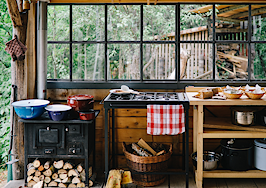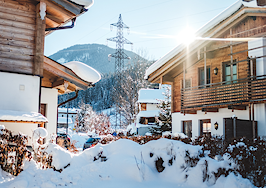Fire can appear without warning and spread quickly. A small flame can turn into a major blaze within 30 seconds, overwhelming a building in less than five minutes, according to the National Fires Safety Council (NFSC).
Statistics from the American Red Cross report that seven people die in fires every day, while 36 are injured. Preventive measures such as smoke and carbon monoxide alarms have reduced the number of house fires, but there are important precautions and thoughtful actions everyone can take in the event of an emergency.
Preventing fires at home
There’s no surprise that, with its many electrical appliances, kitchens are where most fires take place. Stoves and grease fires are common, and they can spread rapidly. Electrical outlets must never be overloaded, and all electrical cords should be regularly checked for possible fraying or loose plugs.
Smoke alarms will indicate the presence of smoke in a home, but they may also be triggered by dust or moisture. That’s why testing home smoke alarms on a monthly basis and replacing batteries annually is recommended.
The use of both carbon monoxide detectors and smoke detectors is strongly advised in residences, with one of each on every floor. Many states have legislation requiring smoke detectors in residences, but whether it’s mandated or not, having one or more functioning smoke detectors in every home is strongly suggested.
What’s more, keeping a fire extinguisher in the kitchen — and knowing how to use it — can prevent a small fire from becoming a tragedy. The National Fire Protection Association suggests remembering the word “PASS” when using a fire extinguisher:
- “P” reminds us to pull the small pin to operate the extinguisher.
- “A” directs us to aim the extinguisher low, at the base of the flames.
- “S” suggests that the lever must be squeezed slowly and evenly
- “S” is to sweep the steam back and forth slowly.
While this may seem self-evident and even corny, in the event of an emergency, it’s always a good idea to have a simple tool to help you remember what to do. It might prevent you from panicking and fumbling around.
Installing a sprinkler system is another way to extinguish fires before they get out of control or contain them inside a residence. Home sprinklers became commonplace in the 1970s and are a good method to decrease poisonous gas or smoke from spreading.
Developers adopted sprinklers as they enabled more housing units to be built per acre, with more space between fire hydrants. Activated by heat, the sprinklers become active even before the fire department arrives at the site of the fire.
While obvious candles and cooking of any kind should not be left unattended, another cause of fires in residences is the clogged lint trap in a clothes dryer — always make sure the lint is removed. Dryers are responsible for nine out of 10 appliance fires.
It’s also worth mentioning that fireplaces and chimneys should be maintained to prevent chimney fires or malfunctioning fireplaces flues.
What to do in the event of a fire at home
As soon as a person is out of harm’s way, they should notify the fire department. This is extremely important. The presence of smoke or an open flame inside requires immediate action.
Because you only have two minutes to evacuate a burning building, the Red Cross suggests having two methods of egress. Keeping these means of exit clutter-free at all times is vital. If one door is blocked — or if the doorknob is warm or smoke is coming out from under the door — you’ll have a second way out.
If a door or doorknob is hot, don’t open the door. Multiple escape routes are required as fires can heat inside air from 100 to 600 degrees very quickly. Clothing will melt on the body, and inhaling air at these high temperatures will scorch your lungs, causing you to become disoriented, faint or stop breathing.
When exiting the burning house, close, but do not lock doors behind you. Once outside the building, a central gathering place — such as a tree or a landmark that can be easily found, even in the dark — will prevent confusion and panic. Under no circumstances should you reenter a burning building.
Types of fires
Firefighters are schooled in determining the type of fire, and the best method to control and extinguish the flames. While it may be irresistible to play the hero and attempt to extinguish a blaze rather than retreat, an inexperienced homeowner may only make the fire worse, rather than control it.
There are five different “classes” of fires, and each requires its own strategy to effectively resolve. Class “A” fires are the most common, involving paper, wood or other dry combustibles. These fires are easily extinguished by water.
The second class of fire is Class “B,” which involves flammable liquids, oils, gases or chemicals. These fires require extinguishers with foam powders or carbon dioxide extinguishers. Class “C” fires are those that start from energized electrical equipment, like computers. These require dry powder or carbon dioxide to extinguish.
Rare in most residences, but still worth mentioning are Class “D” or metal fires. Metal can become so hot that it can self-combust, and while this type of fire is more common in an industrial environment and requires dry powder to extinguish, it’s an example of a fire best left to professional firefighters.
Class “E” fires are electrical fires, which can occur in residences and require wet chemical extinguishers. House fires can escalate very quickly, and a homeowner has only a few seconds to act to prevent disaster. In any emergency situation, it’s easy enough to say “don’t panic,” but it’s not always possible.
Fires are preventable, so being careful and thoughtful at home will prevent most accidents. In the case of an actual fire, evacuation and waiting for professional help is the best solution.
Gerard Splendore is a licensed associate real estate broker with Warburg Realty in New York. Connect with him on LinkedIn.













